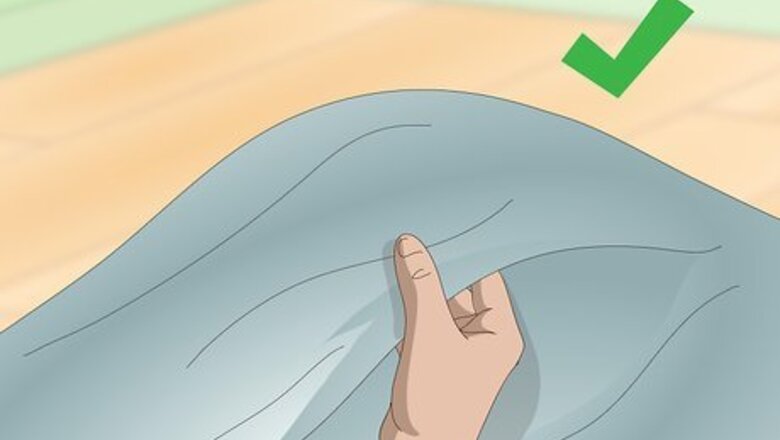
views
Measuring and Cutting the Fabric
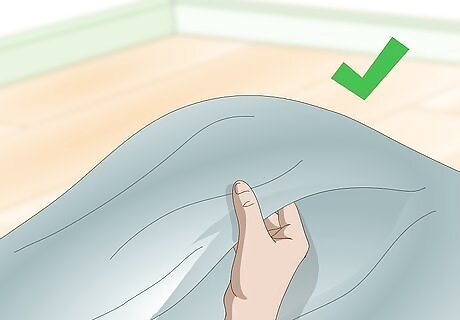
Choose your fabric. You can make blackout curtains out of a heavy, tightly woven curtain fabric, or you can use a lighter fabric, such as a cotton or linen. If you want your blackout curtains to block as much light as possible, then you may want to opt for a heavy, tightly woven fabric. However, since you will be using a blackout lining fabric, you can go with a lighter fabric and the curtains will still block most of the light.
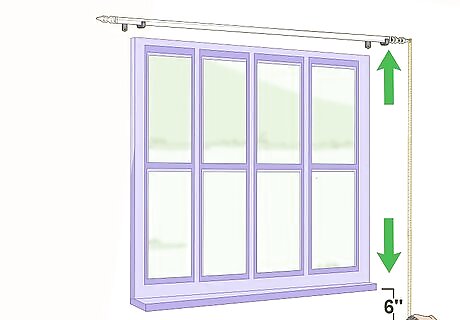
Measure from the curtain rod to 6 inches (15 cm) below the windowsill. Blackout curtains should completely cover the window to ensure that no light gets in from outside. That’s why it is important to make your curtains long enough to completely cover the windows. Use a measuring tape to measure from the curtain rod to the area 6 inches (15 cm) below the windowsill. Write down the measurement. You will need extra length because you will need to fold over the top of the curtain twice to create a loop for the curtain rod.
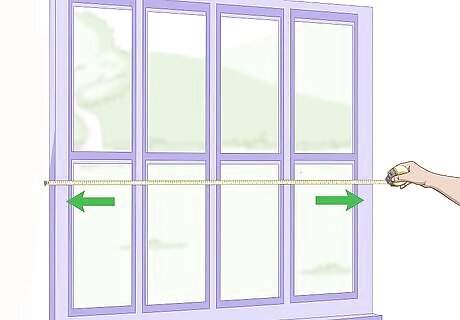
Measure the window from side to side. Next, make sure that the curtain will completely cover the window from one side to the other. Measure the window from side to side going from the outer edge of the window on one side to the other, adding a little clearance for the side hems. Record this measurement.
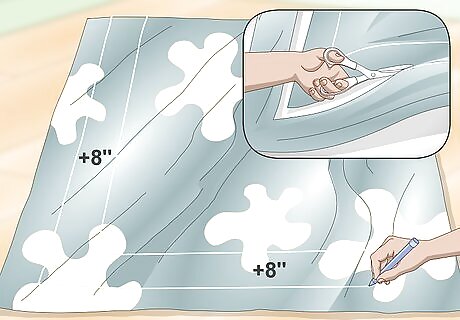
Add 8 inches (20 cm) to the printed curtain fabric and cut. After you have found the dimensions of the outer edges of the windowsill, add 8 inches (20 cm) to each measurement to ensure that you will have plenty of fabric to hem the curtains. Cut the printed curtain fabric to these dimensions. For example, if the windows measure 42 inches (110 cm) by 60 inches (150 cm), then your curtain fabric should be 50 inches (130 cm) by 68 inches (170 cm). Cut your printed curtain fabric to these dimensions.
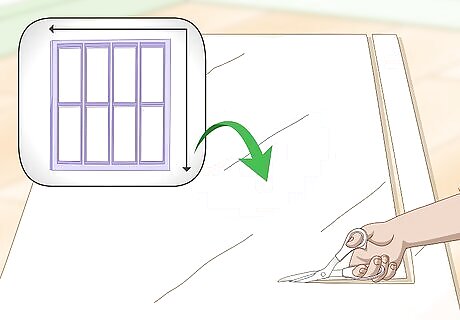
Cut the blackout fabric to the dimensions of the window. The blackout fabric does not need to be as large as the printed curtain fabric because it is only lining the curtains. Use the window dimensions that you found to cut the lining fabric. For example, if the dimensions of the window were 42 inches (110 cm) by 60 inches (150 cm), then cut your blackout lining fabric to these dimensions. If desired, you may add 2 inches (5.1 cm) to the dimensions to provide some extra leeway with the fabric. In this case, your required dimensions would be 44 inches (110 cm) by 62 inches (160 cm).
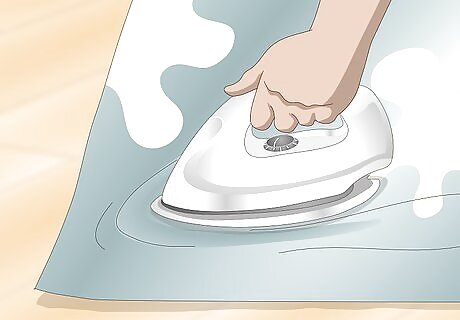
Iron the blackout fabric and printed curtain fabric, if desired. If your fabric is wrinkled, then ironing it is a must. If the fabric is not wrinkled, then you may skip ironing it. Use the lowest possible setting on your iron and iron the fabric in sections. If you are using a delicate fabric for the outside of your curtains, then you may want to place a towel or t-shirt over the fabric before you start ironing.
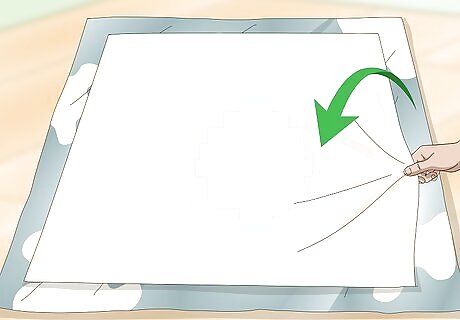
Center the blackout fabric on top of the printed curtain fabric. Place the printed curtain fabric print side down on a flat surface and spread it out as much as possible. Then, lay the blackout fabric on top of the printed curtain fabric and center it. The blackout fabric should look the same on both sides, but 1 side may look glossier than the other and this side should be visible. Ensure that the edges of the blackout fabric are the same distance from the edges of the printed curtain fabric. Make sure that both fabrics are unfolded and that they are spread out as much as possible. Tug on the edges and smooth them out as needed.
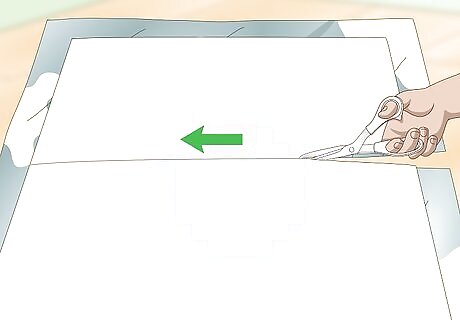
Cut down the center of the 2 fabric pieces to make 2 panels. If you want to make 2 curtain panels instead of 1, find the center of the 2 pieces. Use chalk to draw a line down the center and place some pins along the center line to secure the 2 pieces of fabric together. Then, cut down the line with a sharp pair of scissors. Re-center the blackout fabric pieces on the curtain fabric pieces after you cut them. Follow the rest of the instructions to sew each panel.
Folding and Pinning the Fabric
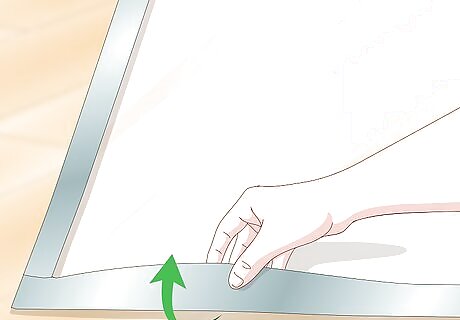
Fold the edges of the printed curtain fabric over the blackout fabric. Take one of the raw edges of the printed curtain fabric and fold it in towards the center of the fabric. Fold over 2 inches (5.1 cm) of the printed curtain fabric so that it completely covers the edges of the blackout lining fabric. Repeat this on all 4 sides of the curtain fabric. Remember that the blackout fabric will face the window. Make sure that the edges of the folds are lined up with the fabric on the ends.
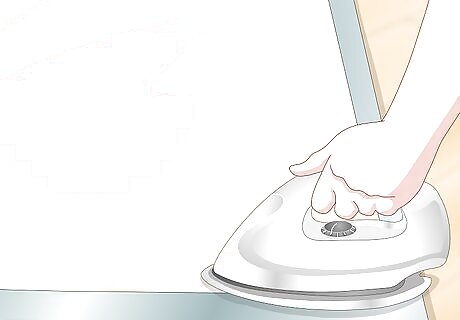
Crease the fold. Run your hand down the fold and press on it to crease the fabric. If you want to get a neater edge, then you can also iron along the fold. This will also help to keep the fabric folded while you sew. If you decide to iron the hold, use the lowest possible setting on your iron. You may also want to place a towel or t-shirt over the fabric to protect it from the heat.
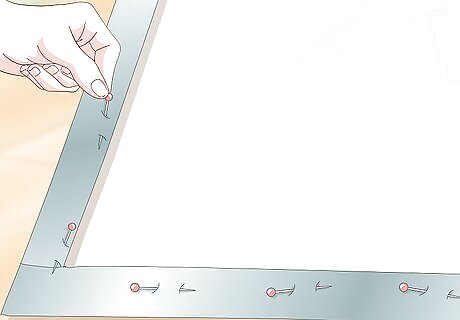
Pin the edges in place. Insert a pin every 3 inches (7.6 cm) to secure the fabric. The pins should go through both layers of fabric: the printed curtain fabric and the blackout lining fabric. This will hold the fabric in place until you are ready to sew. Insert the pins going from the outer edge and in towards the center of the fabric. This will reduce the chances of sewing over the pins and also make it easier to remove them as you sew each section.
Hemming the Curtains
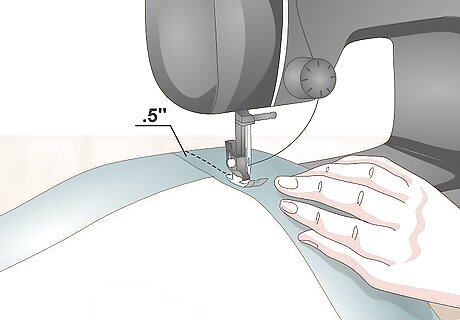
Start sewing 0.5 in (1.3 cm) from the raw edges of the curtain fabric. Use the straight stitch setting on your sewing machine to sew the curtain fabric and lining in place. The stitch should be on the inner edge of the folded area and about 0.5 in (1.3 cm) from the raw edge of the printed curtain fabric. The straight stitch setting is usually #1 on sewing machines, but make sure to consult your sewing machine’s instructions if you are unsure. You may need to adjust the stitch length to accommodate the thickness of the material.
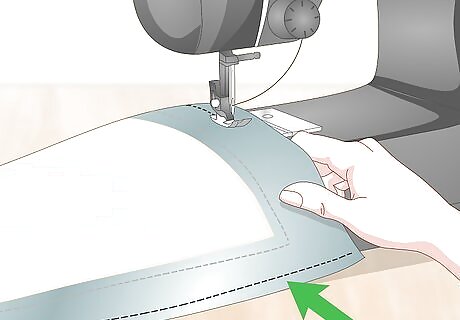
Sew a straight stitch along all 4 folded edges of the fabric. The straight stitch needs to go all the way around the raw edges of the fabric. Turn the fabric when you reach a corner to continue sewing the straight stitch in a continuous line around the edges of the printed curtain fabric. Keep sewing until you are back where you started. Keep the stitch the same distance from the raw edges all the way around the fabric. Remove the pins as you sew past them.
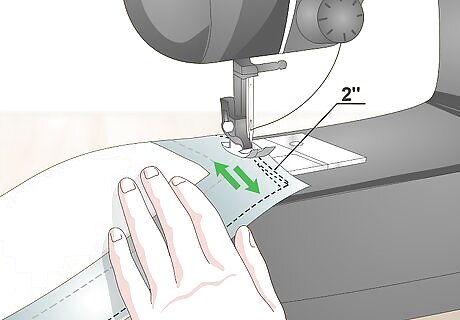
Backstitch 2 inches (5.1 cm) when you reach the end. To secure the final stitch of your curtain hem, press down on the reverse lever on the side of your sewing machine. Continue to apply light pressure to the pedal as you hold down the lever. This will reverse the stitch direction. Backstitch about 2 inches (5.1 cm) and then release the lever and sew to the end of the last curtain edge again.
Making the Curtain Rod Loop
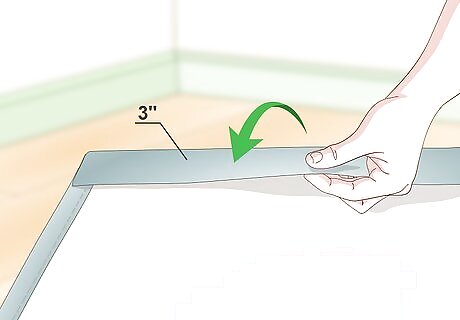
Fold over 3 inches (7.6 cm) of the top edge of the curtain fabric. Folding the curtain fabric over so that the edge will be hidden on the blackout (wrong) side of the curtains will create a space for the curtain rod. To create a loop that you can insert the curtain rod into, fold over the fabric on the edge that will be the top of your curtain. Fold over 3 inches (7.6 cm) of fabric. Make sure that the edges of the folded fabric are lined up with the edges of the fabric on both sides. You may want to check to make sure that your curtain rod will fit easily through the loop that folding over 3 inches (7.6 cm) will create. If not, add another 1 inch (2.5 cm) to the folded fabric.
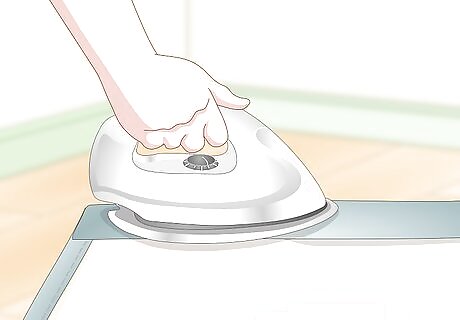
Press the folded edge if desired. You may press the folded edge with your hand or with an iron to crease the same way that you did with the other folded edges. Place a towel or t-shirt over the fabric to protect it if you iron it. Pressing the fabric is optional. It may just help to create a neater looking finished curtain.
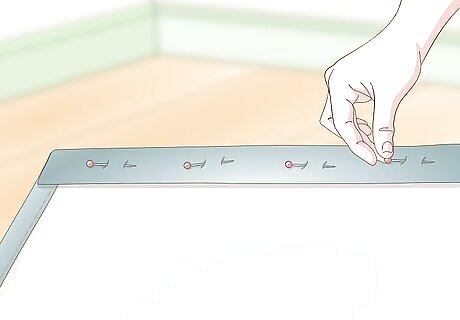
Insert pins to hold the folded fabric in place. Place a pin about every 3 inches (7.6 cm) to hold the folded fabric in place. Insert the pins so that they are perpendicular to the folded edge of the fabric.
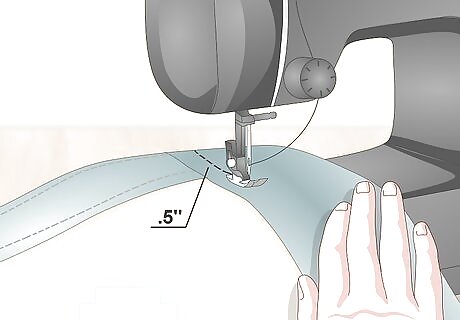
Sew a straight stitch 0.5 inches (1.3 cm) from the hemmed edge. This will secure the fold in place and make it possible to insert your curtain rod through the fold. Sew all the way across to the other side.
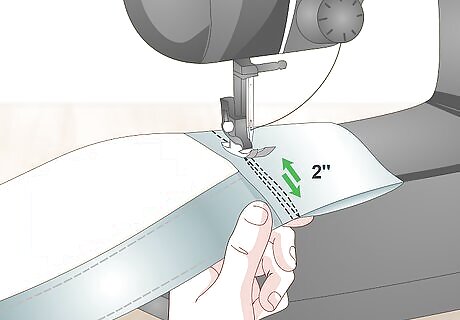
Backstitch by about 2 inches (5.1 cm) to secure the last stitch. Backstitch the same way that you did with the final edge of the curtain hem. Press and hold the lever so that your sewing machine will reverse directions while you hold the pedal. Then, release the lever and sew forward to the end again. Snip any stray threads after you complete the last few stitches. Your curtains are now complete! Hang them up and enjoy!

















Comments
0 comment